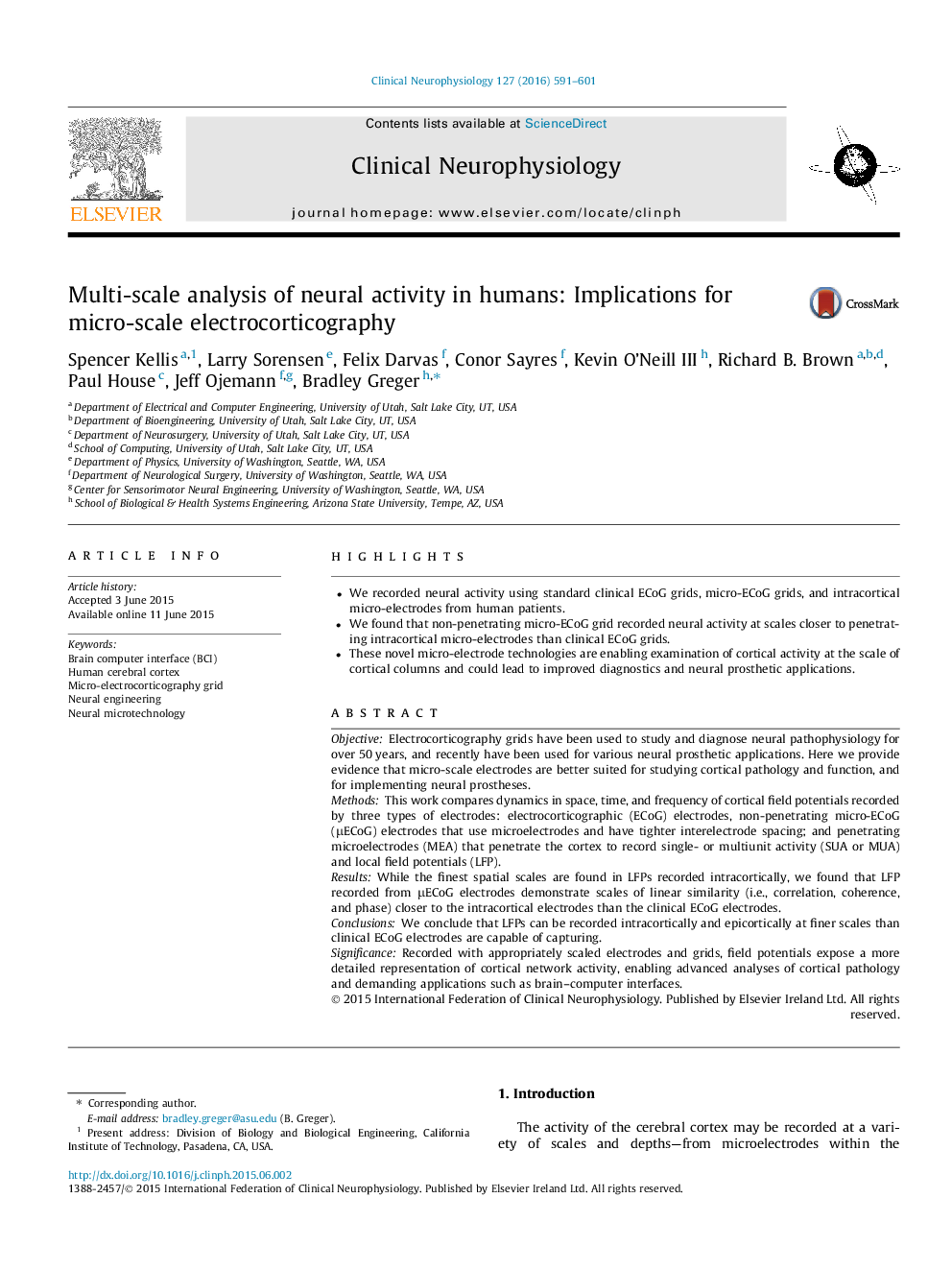| Article ID | Journal | Published Year | Pages | File Type |
|---|---|---|---|---|
| 6007939 | Clinical Neurophysiology | 2016 | 11 Pages |
â¢We recorded neural activity using standard clinical ECoG grids, micro-ECoG grids, and intracortical micro-electrodes from human patients.â¢We found that non-penetrating micro-ECoG grid recorded neural activity at scales closer to penetrating intracortical micro-electrodes than clinical ECoG grids.â¢These novel micro-electrode technologies are enabling examination of cortical activity at the scale of cortical columns and could lead to improved diagnostics and neural prosthetic applications.
ObjectiveElectrocorticography grids have been used to study and diagnose neural pathophysiology for over 50 years, and recently have been used for various neural prosthetic applications. Here we provide evidence that micro-scale electrodes are better suited for studying cortical pathology and function, and for implementing neural prostheses.MethodsThis work compares dynamics in space, time, and frequency of cortical field potentials recorded by three types of electrodes: electrocorticographic (ECoG) electrodes, non-penetrating micro-ECoG (μECoG) electrodes that use microelectrodes and have tighter interelectrode spacing; and penetrating microelectrodes (MEA) that penetrate the cortex to record single- or multiunit activity (SUA or MUA) and local field potentials (LFP).ResultsWhile the finest spatial scales are found in LFPs recorded intracortically, we found that LFP recorded from μECoG electrodes demonstrate scales of linear similarity (i.e., correlation, coherence, and phase) closer to the intracortical electrodes than the clinical ECoG electrodes.ConclusionsWe conclude that LFPs can be recorded intracortically and epicortically at finer scales than clinical ECoG electrodes are capable of capturing.SignificanceRecorded with appropriately scaled electrodes and grids, field potentials expose a more detailed representation of cortical network activity, enabling advanced analyses of cortical pathology and demanding applications such as brain-computer interfaces.
